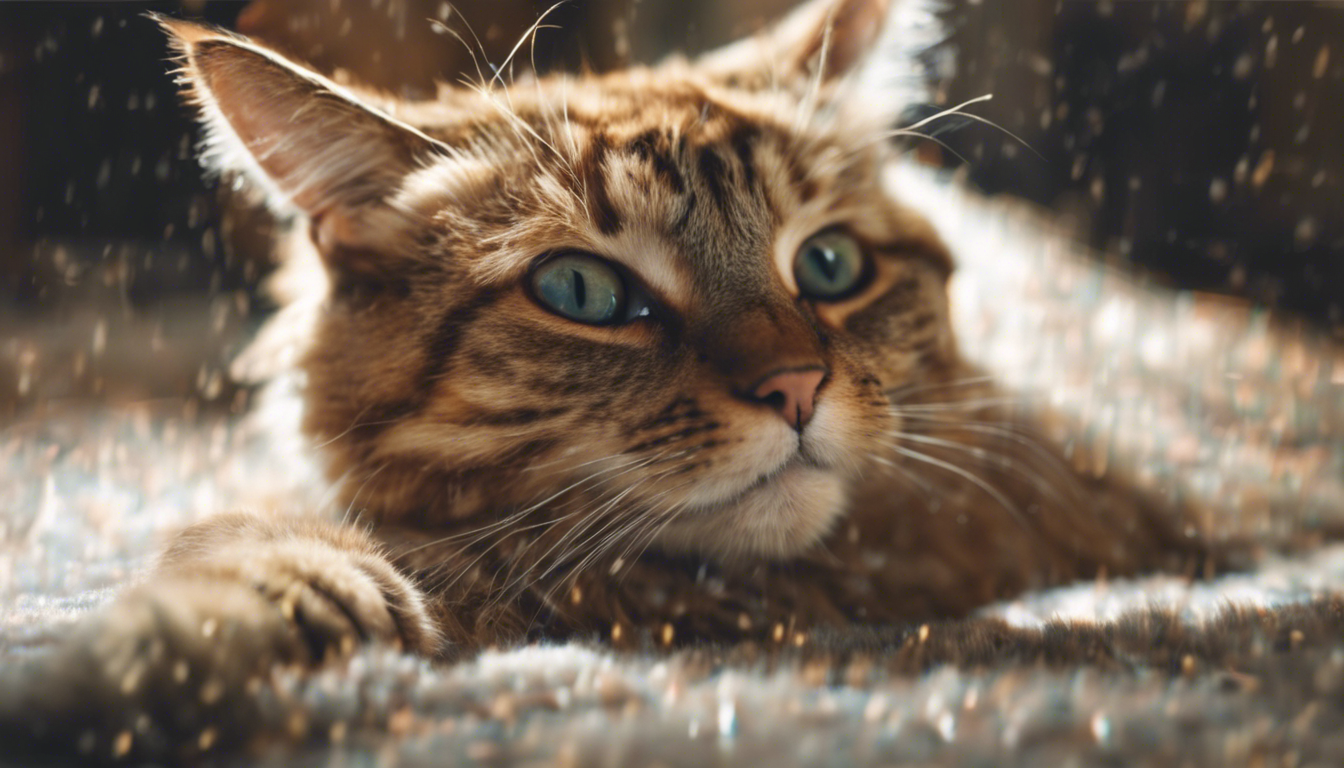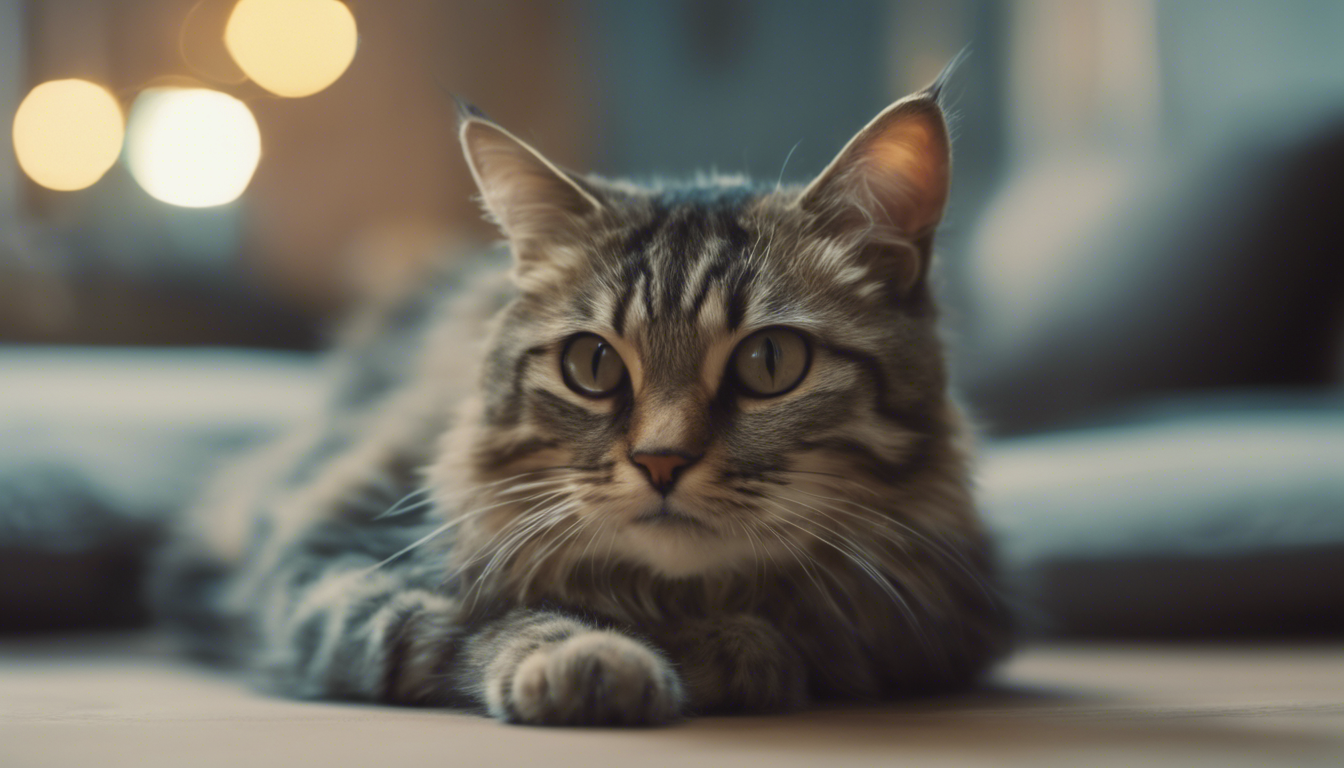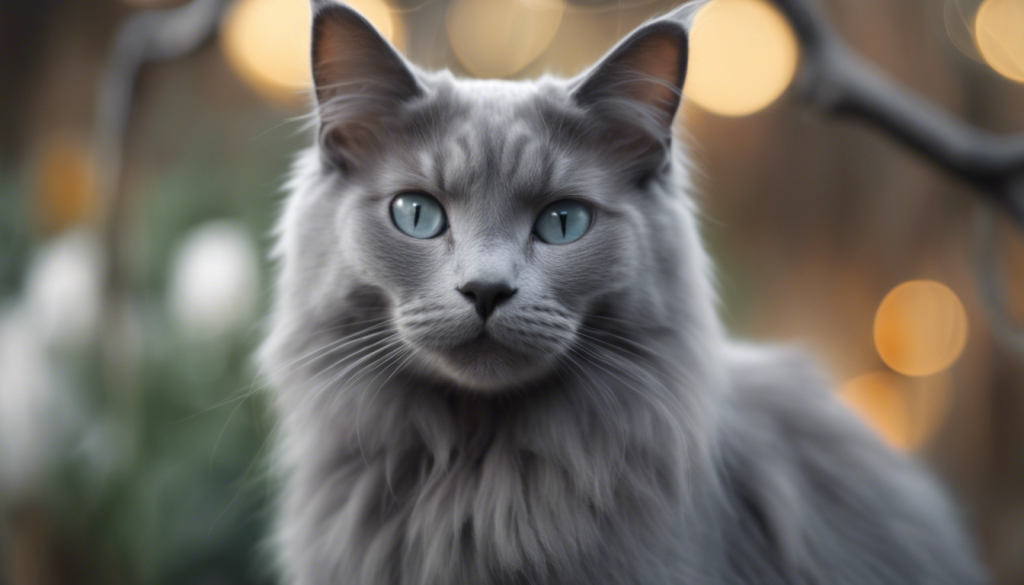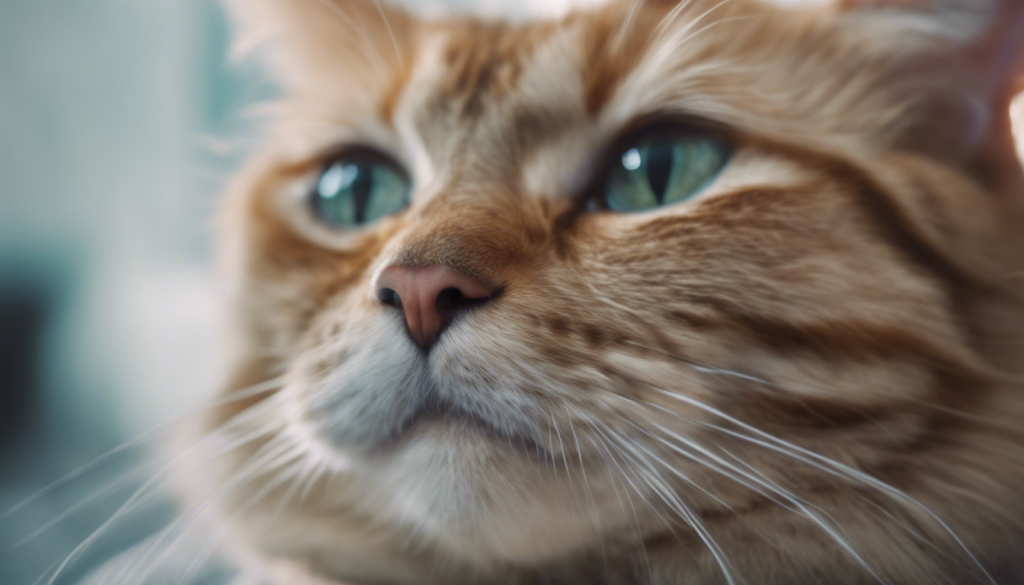
Understanding feline perception and sensation
Cats may seem like mysterious little creatures with their enigmatic stares and independent attitudes, but when it comes to their perception and sensation, they’re quite the sensory superheroes. Have you ever wondered how your feline friend perceives the world around you? Their experience is vastly different from ours, and it’s not just about having nine lives or always landing on their feet.
First off, let’s talk about those big, beautiful eyes. A cat’s vision is like a built-in night-vision goggle set. They can see in super low light, all thanks to numerous rods in the retina that are sensitive to dim light. But ever notice how your cat might not pounce on that new red toy you bought them? That’s because their color vision isn’t quite like ours – they see blues and yellows, but reds can be a bit fuzzy. Don’t worry, though; what they lack in color perception, they make up for with their incredible ability to detect the slightest movement, which is why the tiniest bug doesn’t stand a chance.
Moving on to their sense of hearing, it’s like they have their own secret service earpiece helping them pick up the tiniest of sounds. Cats can hear the high-pitched frequencies that we humans can’t, such as the sound of a mouse scurrying or the infamous squeak of a toy mouse. This acute hearing also helps them pinpoint where a sound is coming from with astonishing precision – handy for hunting and also for knowing exactly which cupboard you just opened (yes, the one with the treats).
And then there’s the whisker wonder. A cat’s whiskers are incredibly sensitive, acting like radar sensors that measure air currents and detect objects in their environment. These nifty tools help them navigate tight spaces and judge if they can squeeze through that seemingly impossible gap.
Now let’s not say goodbye to their sense of smell. It’s not quite as strong as a dog’s, but a cat’s sense of smell is still pretty mighty. It helps them detect the presence of other cats, potential prey, and to savor the aroma of that freshly opened can of tuna. It’s also crucial for communication – those little nose taps they do when greeting each other? This is some serious sniff communication right there.
As for taste, cats are pretty choosy eaters. This selectiveness goes back to their survival instincts – they have a special receptor for bitter tastes, helping them steer clear from potentially toxic plants and animals. So, when your kitty turns up its nose at that bargain brand food, they’re just listening to their taste buds.
Understandably, their highly tuned senses play a huge role in how they interact with the world. It influences their behavior, their relationships with us humans, and how they communicate. Knowing how cats perceive their surroundings can help us create a more stimulating and comfortable environment for them. So next time you catch your cat staring intently at seemingly nothing or leaping away from a cucumber (thinking it is a snake), remember, in the world of feline perception and sensation, there’s a lot more going on than meets our human eyes.
Exploring cat communication and social behavior
Now, turn your attention to the fascinating world of cat communication and their social behavior. Ever watch your cat and wonder what they’re trying to tell you with that tail twitch or those chirping meows? Understanding the nuances of feline language is like deciphering a secret code. Let’s crack it together, shall we?
Those meows aren’t just random sounds; they’re a cat’s main way to chat with us humans. From the soft, pleading meows asking for breakfast to the drawn-out, plaintive cries that seem to say, “Pay attention to me!” – each meow serves a purpose. And while cats vocalize with each other, they tend to save those special soundbytes specifically for communicating with us, their two-legged companions.
But here’s where it gets even more interesting. Cats use a variety of non-verbal cues, too. Take the tail, for example. A straight-up tail can signal happiness, while a puffed-out one could mean your kitty is frightened or agitated. And those slow, languid blinks? Those are the equivalent of kitty kisses, showing trust and affection. If you blink slowly back at your cat, you’re basically saying, “I love you,” in cat language!
Don’t be fooled, though; cats also have a well-developed sense of boundaries and territorial behavior. When a new cat or object enters their space, they’ll sniff and rub against it to mark it as part of their domain, using the scent glands located on their cheeks and forehead. This ritual isn’t just about claiming ownership – it is a way of creating a comforting, familiar environment.
Socially, cats are often mislabeled as solitary creatures, but this isn’t entirely accurate. They may not form packs like dogs, but they do have complex social structures. Feral cats, for instance, often live in colonies where relationships and hierarchies are well established. Indoor cats, too, form deep bonds with their owners and other pets in the household.
Understanding these social dynamics can greatly improve training and interaction. Positive reinforcement works wonders with cats – offering treats, affection, or playtime in response to desired behavior. It builds trust, and you’ll find your cat is more receptive, be it learning to use the scratching post instead of your sofa or coming when called.
The impact of these communication and social skills on the cat-owner relationship is profound. Sharing a language, even a non-verbal one, can create a strong bond. It allows you to provide a supportive and enriched environment that caters to their complex social and communication needs. In turn, they might just grace you with those nose boops of approval or curl up on your lap for a cozy nap, which, as any cat owner will tell you, is pretty much the highest honor there is.

Investigating the role of play and hunting instincts
Let your curiosity pounce as we learn the world of feline play and hunting instincts. What may seem like simple entertainment for your cat is actually rooted in their innate drive to hunt. It is why your kitty might pounce on a toy mouse or chase after a laser pointer with such determination. These playful behaviors mimic the skills they would use to stalk, chase, and capture their prey in the wild.
Play isn’t just fun and games for cats; it is a survival mechanism. For kittens, play is a critical part of their development, teaching them the techniques they need for hunting and self-defense. Chasing after string toys helps hone their coordination and timing, while batting at a feather wand develops their paw-eye coordination. All these activities stimulate their minds, keep their agile bodies in shape, and help manage any mischievous energy that could otherwise be directed at your favorite furniture.
But let’s not forget the thrill of the hunt! A cat’s sharp, sudden movements during play are not just entertaining to watch; they mirror the precision and agility needed for a successful hunt. When your cat stalks their plush mouse toy, they’re exhibiting the same focused attention and stealth they would use to creep up on real prey. The sudden pounce at the end isn’t just cute – it’s a display of their innate predatory skills.
Their integral hunting instincts also explain why outdoor cats bring home trophies from their outdoor ventures. While it might not be the gift you wanted, it is a sign of your cat using those primal instincts. To keep them safer (and the local wildlife), giving them various interactive toys indoors can satisfy these urges to a great extent.
Understanding this need to play and “hunt” can enhance the way you interact with your furry friend. Engage your cat in regular play sessions using toys that stimulate their natural hunting behaviors. Try hiding toys for them to discover or moving a toy erratically to entice their chase. Not only will this keep your cat mentally sharp and physically active, but it will also deepen the bond between you as you participate in their favorite pastime.
Moreover, these instincts have an impact on training techniques too. Introducing puzzle feeders or treat-dispensing toys can make mealtimes an exciting challenge that taps into the joy of the chase. By satisfying their hunting instinct, these activities can also prevent boredom and related behavioral issues. Ultimately, through understanding and nurturing these natural behaviors, you will create a more stimulating environment that respects and celebrates your cat’s wild side.
Delving into the feline learning and memory processes
Now let’s turn our gaze to the fascinating capabilities of feline learning and memory. It is true, cats may not sit or shake on command as readily as their canine counterparts, but don’t be mistaken – they’re constantly learning from their environment. The key lies in tapping into their particular style of cognition and memory.
Cats are observational learners. Have you ever noticed your cat watching you intently as you go about your daily tasks? They’re not just being nosey; they’re studying you. They learn where you keep their food, when you are likely to give them attention, and even how to open doors by watching and remembering your actions. Their curiosity isn’t just cute; it’s their way of gathering information about the world around them.
Memory plays an important role in a cat’s life, too. Cats have both short-term and long-term memory, and they use these to navigate their day-to-day lives. Their short-term memory can last up to 16 hours, which is quite impressive when compared to other animals. This means that if they had a positive experience with you this morning, they’re likely to remember it and anticipate more good times later in the day. But they also hold grudges, so remember this next time you accidentally step on a tail!
Long-term memory is where cats excel, especially when it’s tied to strong emotions or survival. If something frightened them or made them feel safe and happy, they’re likely to remember it for a long time. That is why a cat may be skittish in a home where they had previously experienced stress, or why they may instantly remember and respond to the sound of a treat jar being opened, even if it is been a while.
Training a cat, therefore, requires a different approach than training a dog. It is all about making the experience rewarding and positive. Cats are more likely to repeat behaviors that result in a pleasant outcome. For instance, if you provide a treat every time your cat uses their scratching post, they’ll remember the post positively and use it more often. Similarly, if they receive attention when they greet you with a soft meow, they’ll remember that communication gets them what they desire – your love and affection.
The impact of understanding feline learning and memory is significant in strengthening the cat-owner bond. By recognizing that your cat learns and remembers differently, you can adapt your approach to their care and training. Use treats, praise, and positive reinforcement to teach them new things and ensure they have a rich environment where they can exercise their natural instincts and curiosity.
Remember, patience is key. Cats may take longer to learn certain behaviors, but with consistent positive reinforcement and an understanding of their memory processes, they’ll amaze you with their capacity to adapt and thrive. And isn’t it fascinating to consider that, while they may not always show it, your cat likely remembers much more of your shared experiences than you realize? Whether it is mastering a new trick or simply finding comfort in the routine you provide, their learning and memory shape every aspect of their unique personalities and the special relationship you share with them.







